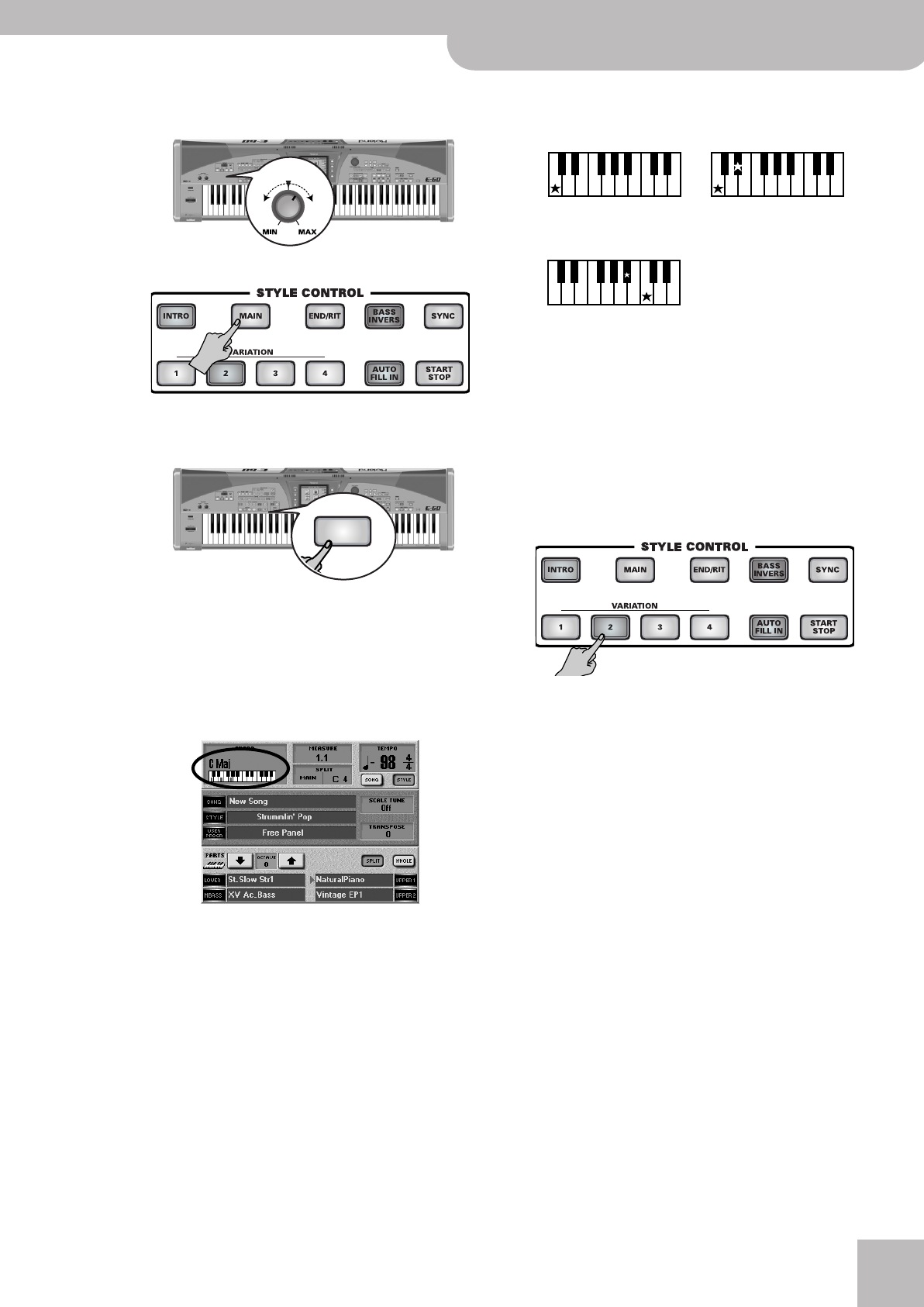
Playing to an automatic accompaniment
E-60/E-50 Music Workstation
r
23
(4) Set the MASTER [VOLUME] knob to a reasonable
level (e.g. about “1/4”).
(5) Press the [MAIN] button (it lights).
(6) Play a chord in the left half of the keyboard, then
press the STYLE CONTROL [START÷STOP] button.
The [START÷STOP] button lights and the Arranger
starts playing the accompaniment of the currently
selected Music Style (called “Strummlin’ Pop”).
The accompaniment pattern is sounded in the key
that corresponds to the note you played (C). The
name of the corresponding chord is displayed in the
upper left-hand corner of the display:
Note: See “Song/Arranger Start Priority” on p. 196 if Arranger
playback does not start.
(7) Play another chord in the left half of the keyboard.
The same pattern is now played in that key. You don’t
even have to play full chords:
• For major chords, playing just the root note is
enough (e.g. “C” for C major, “A” for A major, etc.)
• For minor chords, playing the root note and the third
key to its right will do.
• For seventh chords, playing the root and the second
key to its left is enough.
Note: The function that takes care of this easy fingering is
called “INTELLIGENT” (page 67). See also p. 209 for a list of
other chords that can be played using this system (augmented,
diminished, etc.).
What you hear now is the “MAIN 1” pattern (the
[MAIN] and VARIATION [1] buttons light). This is the
simplest accompaniment of the selected Music Style.
Let’s listen to the accompaniment you could use for
your choruses:
(8) Press the VARIATION [2] button (the [MAIN] and [1]
buttons light and [2] flashes).
At the end of the VARIATION [1] pattern, the VARIA-
TION [2] button lights steadily and the Arranger plays
a different accompaniment.
(9) Now try out Variations 3 and 4.
Professional transitions: Fill In
So far, we have only used the main accompaniment
patterns (i.e. the phrases that are repeated over and
over until you stop the Arranger).
The various variations can be used for verses (1), second
verses (2), choruses (3 & 4) and other song parts.
Switching between these patterns is a matter of press-
ing the VARIATION [1]~[4] buttons. Yet, that produces
instant changes of the accompaniment, while “real”
musicians tend to “announce” new song parts by means
of roll in the drums or slightly different accompaniment
notes.
The E-60/E-50 allows you to make such “announce-
ments” in the following way:
(1) Start playback of the MAIN [1] pattern (see above).
(2) Play a chord in the left half of the keyboard.
MAS
VOLUME
START
STOP
C major C minor
C7
Only the key that corresponds to
the chord's name.
Root note + third key to the
right.
Root note + second key to the left.
E-60_50_OM_UK.book Page 23 Thursday, June 22, 2006 10:06 AM
